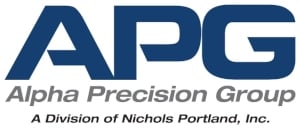
Metal Injection Molding Industry Trends: The Future of MIM
Manufacturing is constantly changing. There’s new technology and methods to test out, automation plans to adopt, and materials to experiment with.
Taking a closer look at different manufacturing methods, metal injection molding stands out as it takes on new challenges. In this article, we’ll explore the latest injection molding industry trends and discuss what we expect to see in the future of this technology.
3 Anticipated Injection Molding Industry Trends
Looking forward, we expect to see 3 main injection molding industry trends take off:
- Metal injection molding automation adoption
- Changes in metal injection molding applications
- Improvements in powder metallurgy materials
1. Metal Injection Molding Automation Adoption
Automation is becoming more prevalent in nearly every manufacturing process, including metal injection molding and we expect this to continue. As technology continues to advance and become more accessible, more companies will adopt these automated processes.
As a result, we expect to see an increase in efficiency, cost savings, and quality control. With automation, tasks that were once done manually can now be performed by machines operating 24/7. This will reduce the risk of human error, improve consistency, and increase production volume.
2. Changes in Metal Injection Molding Applications
As the technology improves, we expect to see changes in the types of applications MIM is used for. Traditionally, metal injection molding is used for small, complex parts – however, advancements in materials and technology are making it possible to produce larger and more intricate components.
Additionally, there is a growing trend towards using MIM for high-performance applications that require complex parts and specialized materials. This includes the automotive, medical, and defense industries.
MIM in Automotive
The automotive industry requires parts to be small, intricate, and high-volume – which metal injection molding offers. In fact, you may have MIM parts in your vehicle that you didn’t know about.
MIM creates several different types of parts for the automotive sector, including:
- Engine components – fuel injectors, turbocharges, and valve components
- Transmission systems – gears, levers, and other components
- Electric vehicle parts – heat-resistance, lightweight parts
For more information on MIM in the automotive industry, check out our article: Metal Injection Molding: Steering the Automotive Industry.
Medical Injection Molding
In medical injection molding, quality, cost-effective parts are a necessity. Most often, injection molding is used in the following medical devices:
- Surgical tools & instruments
- Implantable devices
- Diagnostic equipment components
For more information on medical injection molding, check out our article: How Injection Molding is Used in the Medical Device Industry.
Injection Molding in the Defense Industry
In the defense industry, accuracy, consistency, and durability are key. MIM is one of the most widely used processes in the defense industry and we expect this will continue going forward.
Typically, metal injection molding produces parts, including:
- Fire control group components (triggers, hammers, sears, sear housings, etc.)
- Magazine catch and lock components
- Fire suppression
- Sights and sight plates
- Stock components and accessories
For more information on MIM in defense applications, check out our article: Metal Injection Molding in the Defense Industry.
3. Improvements in Powder Metallurgy Materials
Metal injection molding combines two manufacturing processes into one -- powder metallurgy and plastic injection molding. Due to advancements in powder metallurgy materials, we can expect to see improvements in MIM, such as stronger and more durable parts.
Additionally, with the growing demand for sustainable and environmentally friendly practices, there is a push towards developing eco-friendly PM materials. These materials will allow manufacturers to gain a competitive edge over others as well as benefit the environment.
Exploring the Future of Metal Injection Molding
As mentioned previously, manufacturing is constantly changing. While we never know what the future holds, we believe these metal injection molding industry trends are likely to occur.
If you’re looking for more insight into the MIM process and would like to learn more about its potential, download our eBook on metal injection molding & get started.

